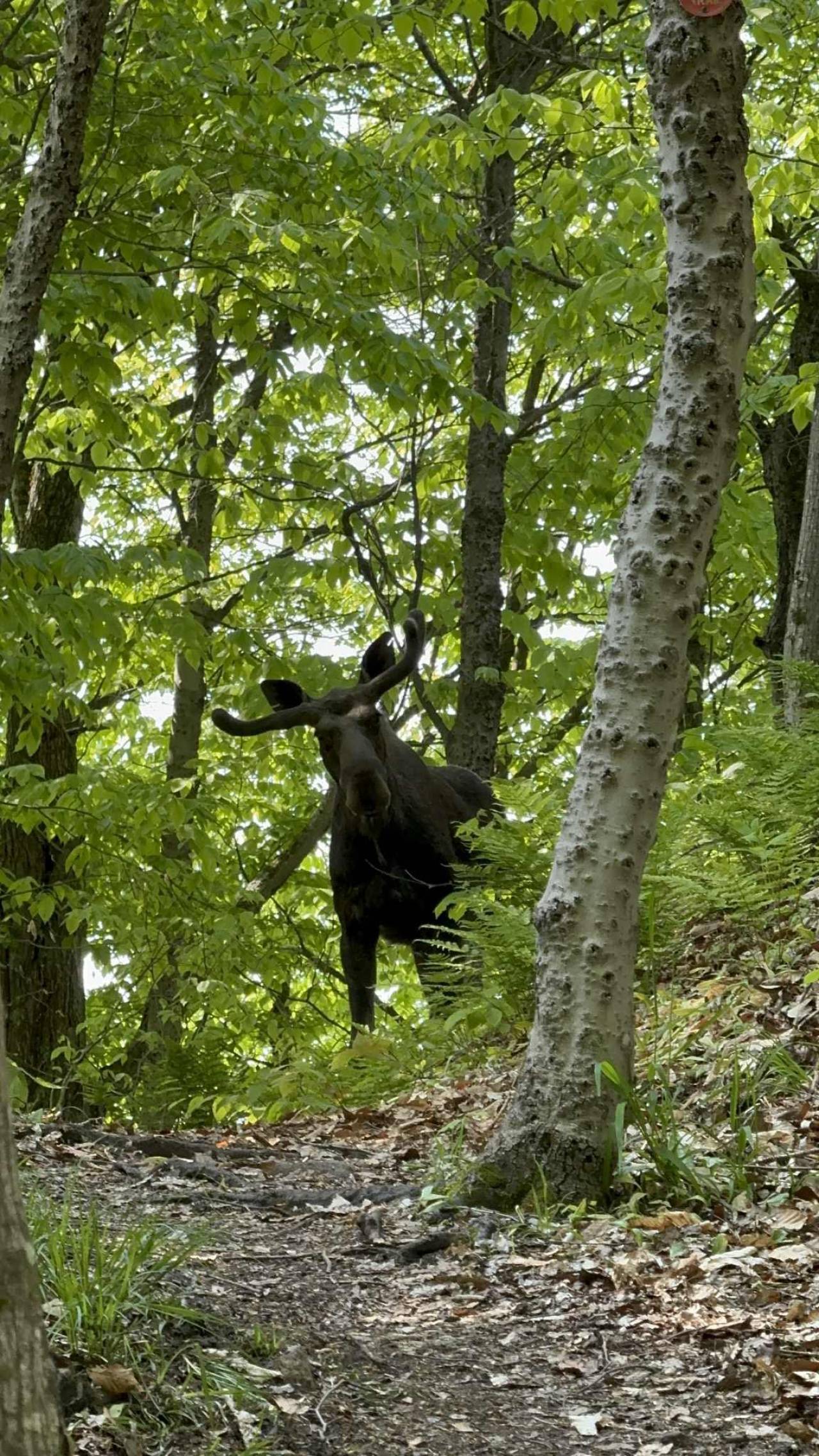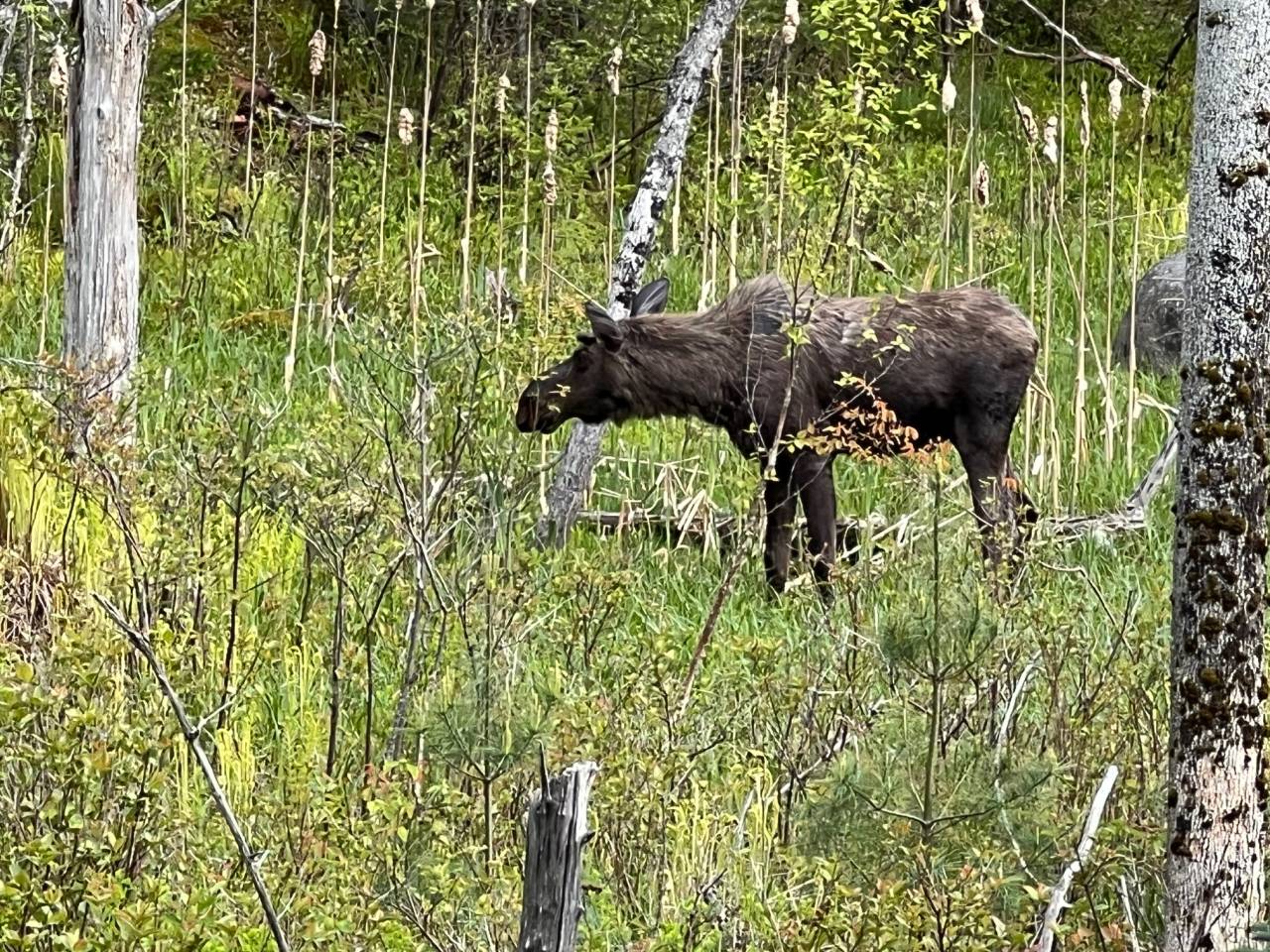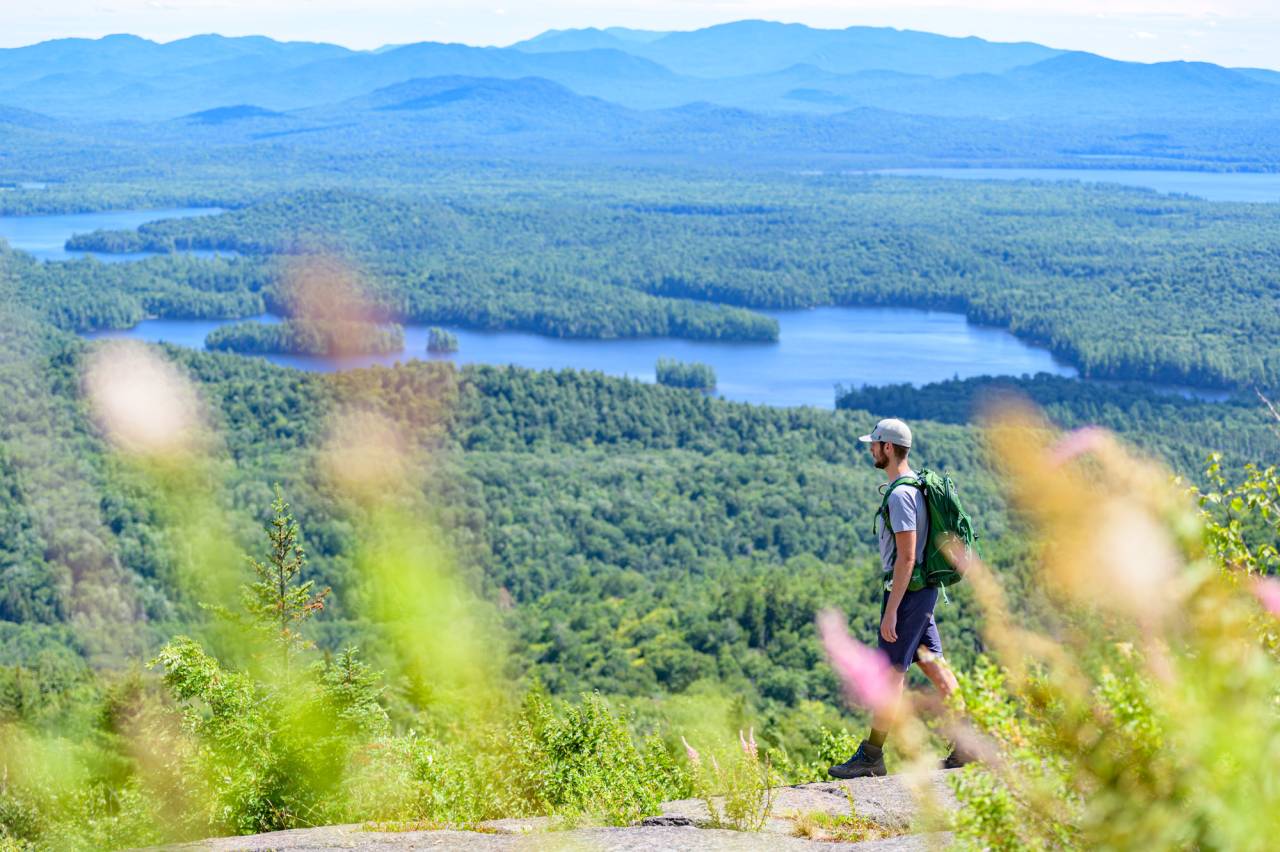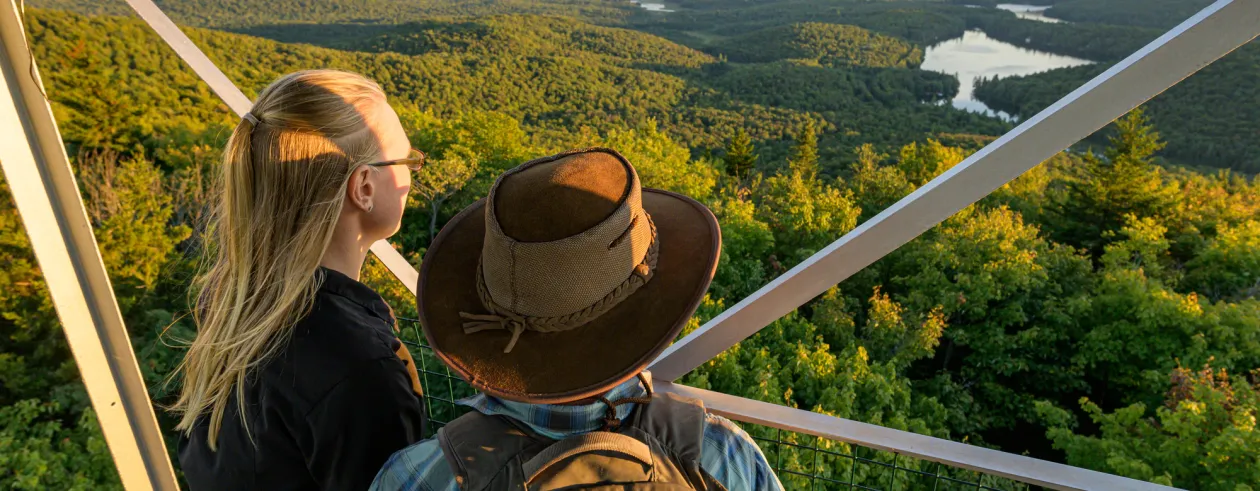
Safety tips for Tupper Lake’s trails
Moose sightings are always an exciting event in the Adirondacks, these gentle giants are elusive, awe-inspiring, and symbolize the wild beauty of our region. Recently, a moose has been spotted on Goodman Mountain, a popular hike and part of the Tupper Lake Triad. The news has drawn an influx of curious hikers hoping to catch a glimpse. But with increased human presence comes increased risk—to both people and wildlife. If you're planning a hike in the area or are wondering how to safely observe Adirondack wildlife, read on for key information, safety tips, and what this means for your next adventure.

Leave No Trace tips
The best way to observe wildlife is quietly and from a distance. One of the easiest and most literal ways to remember how to safely view wildlife is to follow the “Rule of Thumb.” Stick your arm straight out, give a thumbs up, and try to cover the animal with your thumb. If you can still see the animal, you're too close! Take a few steps back and try again. It might feel silly, but this simple trick is a helpful tool for remembering how far away you should be, keeping both you and the animal safe. As a general rule, stay at least 75 feet (about two school buses) away from most wildlife. For larger animals like moose or bears, keep a distance of at least 300 feet (roughly the length of a football field).
Respecting wildlife by giving them plenty of space is a core Leave No Trace principle as wild animals are often unpredictable and potentially dangerous. Quick movements and loud noises are stressful to many animals, and can scare them or force them to flee.
Do not feed animals, no matter how cute, curious, or snack-hungry they seem. Feeding wildlife can lead to stress, illness, and problematic behavior for the animal. Human food is not only unhealthy for them, but it can cause wild animals to lose their natural fear of people. This can result in animals becoming aggressive, lingering near roads or parking areas in search of handouts, and increasing the risk of vehicle collisions. In short: keep your distance, keep your snacks to yourself, and enjoy observing wildlife in a way that keeps everyone safe and wild.



Photo credits: The first photo was taken at Goodman Mountain by Kristina Wilcox during a 2nd grade field trip. The smaller moose was also spotted near Tupper Lake—photos by Mark Sutliffe.
Alternative hikes
There are plenty of trails to discover around Tupper Lake that offer stunning views, peaceful forests, and the chance to explore without the added pressure of heavy foot—and moose—traffic. Whether you’re seeking an outdoorsy escape or simply want to enjoy a quieter experience, these trails are worth the detour.
West: Mount Arab
Mount Arab, located just west of Goodman Mountain, is a popular hike and part of the Tupper Lake Triad challenge. The trail is a manageable 2 miles round trip with an elevation gain of about 750 feet, leading to a summit that stands at 2,525 feet. Along the way, hikers will experience a mix of forested paths and rocky terrain, culminating in an exposed summit with a historic fire tower offering panoramic views.
This trail is perfect for those looking for a moderately challenging hike that rewards with stunning views and a sense of accomplishment. Whether you’re tackling the Tupper Lake Triad or simply seeking an outdoor adventure, Mount Arab provides a scenic and satisfying climb. 
East: Panther and Ampersand Mountains
For hikers looking east of Goodman Mountain, Panther Mountain and Ampersand Mountain offer two excellent trail options. Panther Mountain features a moderately challenging climb with beautiful forest views, while Ampersand is a bit longer and includes a scenic summit overlooking the High Peaks, Tupper Lake, and the Saranac Chain of Lakes.
Panther Mountain offers a short but rewarding hike, with a 0.9-mile round trip and an elevation gain of 475 feet. Standing at 2,236 feet, this trail provides a great option for hikers looking for a quick escape into nature. Despite its brief length, the trail delivers a satisfying climb, perfect for those seeking a manageable outing.
Ampersand Mountain is a more challenging hike, covering 5.4 miles round trip with an elevation gain of 1,780 feet, reaching a summit at 3,353 feet. The trail features steep rock slabs and an exposed summit that rewards hikers with stunning panoramic views of the High Peaks and surrounding wilderness. It’s a great choice for those looking for a longer, adventurous day hike.

South: Buck Mountain
Located just south of Goodman Mountain in Hamilton County, between Long Lake and Tupper Lake, Buck Mountain is a scenic alternative worth exploring. The trail is 1.2 miles one way (2.4 miles round trip) with an elevation gain of 500 feet, leading to a summit elevation of 2,400 feet.
This moderate hike offers a peaceful forest setting and rewarding views, making it a great option for those looking to explore beyond the more crowded trails. With its convenient location and manageable distance, Buck Mountain is a perfect detour for a quiet Adirondack adventure.

North: Floodwood and St. Regis Mountains
North of Goodman Mountain and just a short drive from Saranac Lake, Floodwood Mountain and St. Regis Mountain offer two rewarding hiking options for those looking to explore the area further. Both trails provide a combination of outdoor adventure and a peaceful wilderness experience, making these northern hikes well worth the trip.
Floodwood Mountain is a rewarding hike, offering a 3.3-mile round trip with an elevation gain of 760 feet. Topping out at 2,304 feet, the trail includes a few junctions, so it’s helpful to follow trail markers closely, and finishes with a steep rock slab ascent to the summit. It's a great choice for hikers seeking a moderately challenging adventure near Saranac Lake.
St. Regis Mountain offers a longer and more challenging hike, with a 6.8-mile round trip and an elevation gain of 1,650 feet. The summit reaches 2,874 feet and rewards hikers with sweeping views of the St. Regis Canoe Area and surrounding lakes. Along the way, the trail features a few junctions and a charming footbridge, adding variety to the forested ascent.

Learn more at The Wild Center
Want to dive deeper into the world of Adirondack wildlife? A visit to The Wild Center in nearby Tupper Lake offers a fun and educational way to learn more about the region’s moose population and other native species. The center supports innovative research and conservation projects that help scientists track moose populations and better understand their behavior and health, contributing to long-term conservation efforts across the Adirondacks.
While you're there, don't forget to stop by The Wild Supply Co., the on-site gift shop. Featuring moose-themed souvenirs and nature-inspired gifts, it’s the perfect place to grab a keepsake that ties your Adirondack adventure together.
You'll also find plenty of moose and Adirondack-themed treasures around town. Shops like Cabin Fever Floral & Gifts, the Adirondack Store & Gallery, and Spruce & Hemlock offer locally curated gifts and decor that celebrate the region’s wild charm.

Plan your next adventure and stay safe
Open the door to new trails throughout the Tupper Lake region and surrounding Adirondack Mountains. From quick climbs to longer treks, there are plenty of rewarding hikes that offer as much beauty and adventure as you can find.
As you head out, remember to respect wildlife by observing from a distance, following Leave No Trace principles, and staying aware of your surroundings. With a little preparation, research, and care, your next adventure can be just as memorable—and even more mindful.
